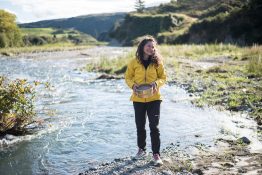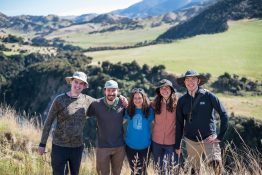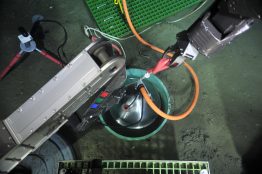Season 2 of FieldSound, the official UW College of the Environment podcast, launches today with this episode! Be sure to like, share and subscribe to catch a new episode each Tuesday. In this episode, Associate Professor of Earth and Space Sciences Alison Duvall shares about tectonic geomorphology, her work with the Cascadia CoPes Hub to increase knowledge about natural hazards and empower communities to build resilience in the face of environmental change, and her path to becoming a scientist.
Read more »UW geologist connects landslide research with communities in high-risk regions
Alison Duvall, University of Washington associate professor of Earth and Space Sciences, is working to understand how climate and climate change might affect the frequency, severity and downstream impacts of landslides, and bring what she learns to community partners working to reduce risk in vulnerable places.
Read more »UW researchers land $10.6M to build subduction zone observatory
Scientists and engineers from the UW School of Oceanography, Department of Earth and Space Sciences and the Applied Physics Lab, along with partners at Scripps Institution of Oceanography, recently were awarded more than $10 million to build an underwater observatory in the Cascadia subduction zone. The funding comes from the National Science Foundation and aligns with larger efforts to better understand subduction zones more broadly.
Read more »Annual research trip off Oregon coast gives students once in a lifetime experience at sea
Most things that humans build need a little maintenance every now and again. That’s no different for the Regional Cabled Array, a high-tech engineering marvel off the Pacific Northwest coast studded with all kinds of oceanographic equipment that gives humans a real-time, 24/7 look at what’s happening under the sea surface. The lengths that scientists and engineers go to keep the array working and up to snuff is extraordinary, and they are currently at sea providing its annual check-up.
Read more »UW, Seattle Public Library, Seattle Public Utilities collaboration uses VR goggles to visualize sea level rise in Seattle
A new project uses virtual reality to help communicate what climate models are predicting: Greenhouse gas emissions are increasing Earth’s temperature, melting glaciers that could create many feet of global sea level rise by the end of this century. The Our Future Duwamish project, available to community groups through The Seattle Public Library, uses Oculus Quest 2 goggles to help viewers imagine rising seas from a vantage point along the South Seattle waterway.
Read more at UW News »





